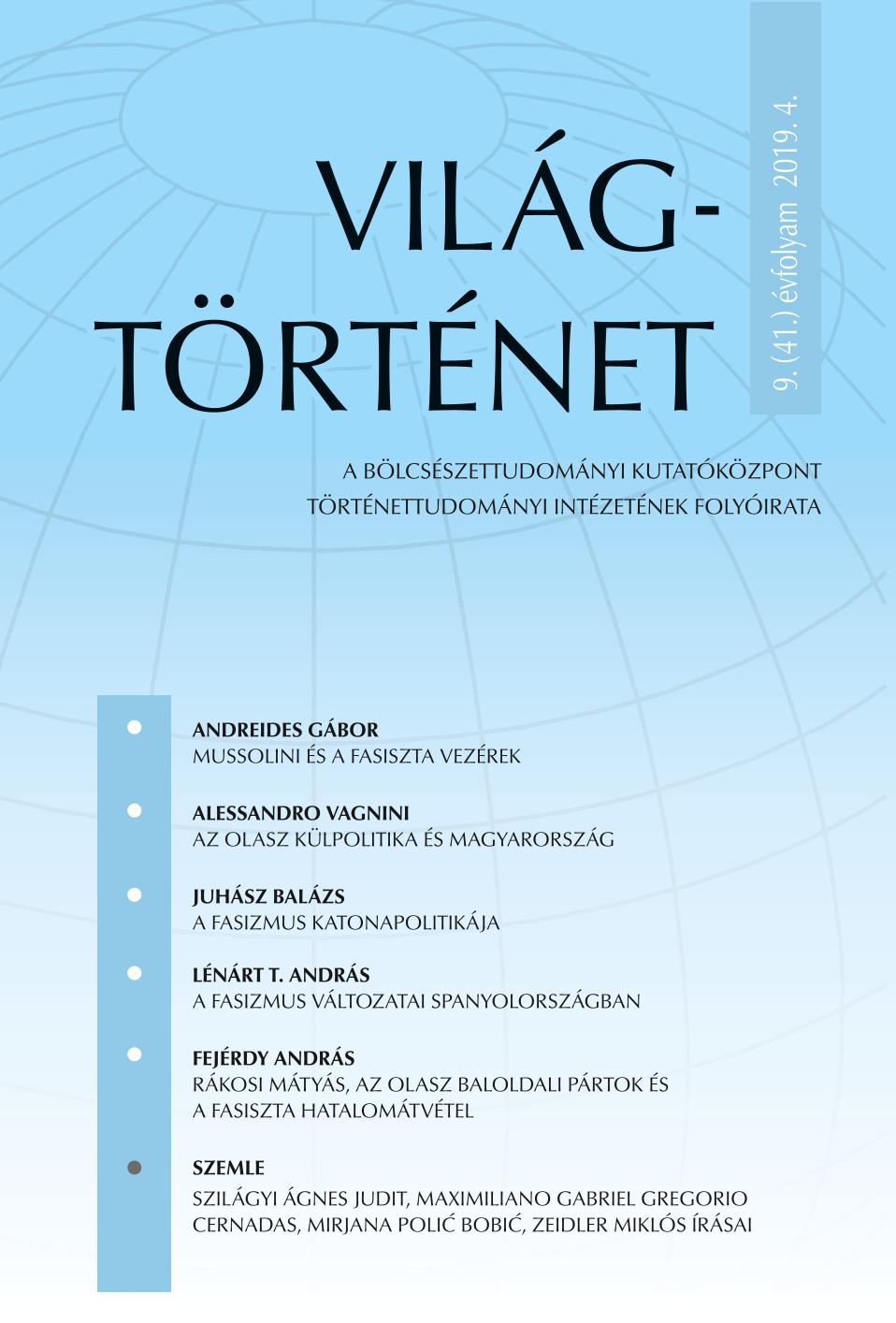A rezsim egyik „perifériája”. A Nemzeti Fasiszta Párt Szicíliában
A “Periphery” of the Regime. The National Fascist Party in Sicily
Author(s): Pasquale FornaroSubject(s): Interwar Period (1920 - 1939), WW II and following years (1940 - 1949)
Published by: Magyar Tudományos Akadémia Bölcsészettudományi Kutatóközpont Történettudományi Intézet
Summary/Abstract: Only in recent times historians removed certain stereotypes that validated the image of a Sicilia felix during the Fascist era, a Sicily marching towards a sure modernization thanks to the inflexible struggle of Cesare Mori, the “iron prefect”, against the Mafia. The reality is much more complex and contradictory. Before and after the “march on Rome”, the fascist movement in Sicily is very marginal and its growth will take place through the entry into the party of men who are not “very first fascists”, but opportunists coming from the old Sicilian hegemonic classes. The fascist party must pay the price of a compromise with the local traditional forces and also with the Mafia, whose complicity with political power will only be scraped, but not eradicated. The candidates elected in the Fascist “National List” in the triumphant 1924 elections amply prove it. But in Sicily the party will long be troubled by sharp contrasts between “very first fascists” and “new fascists”, which will be resolved only through frequent external administrations and purges. This will finally homogenize the party but also depoliticize it. The fascist party will become a mass party, but it will end up carrying out a purely bureaucratic and caring function, as a result of a complex mix of ideology, notability and transformism.
Journal: Világtörténet
- Issue Year: 2019
- Issue No: 4
- Page Range: 513-528
- Page Count: 16
- Language: Hungarian

